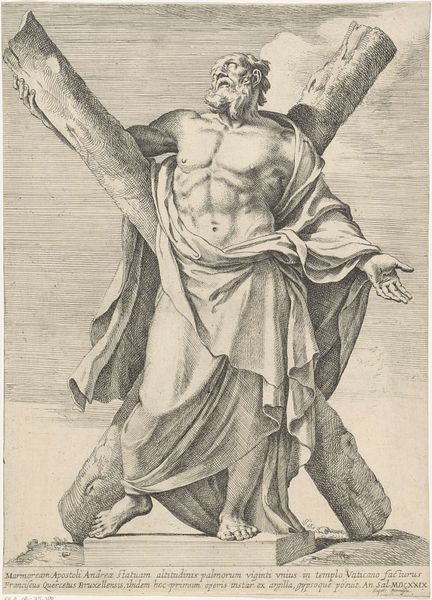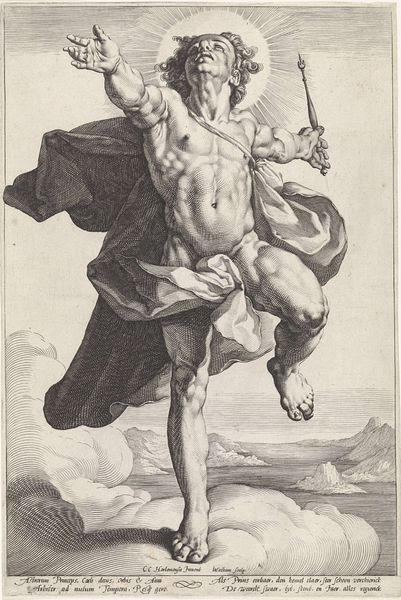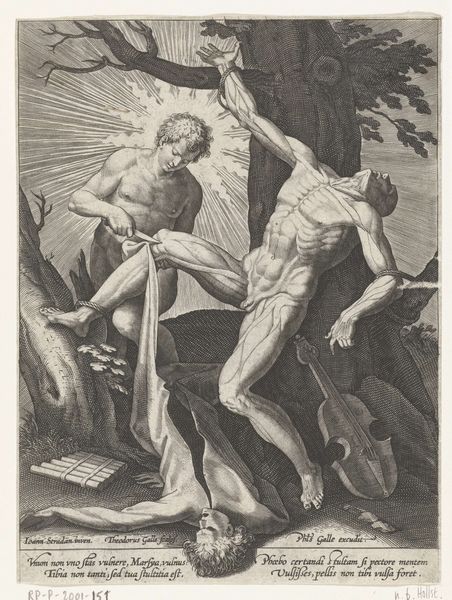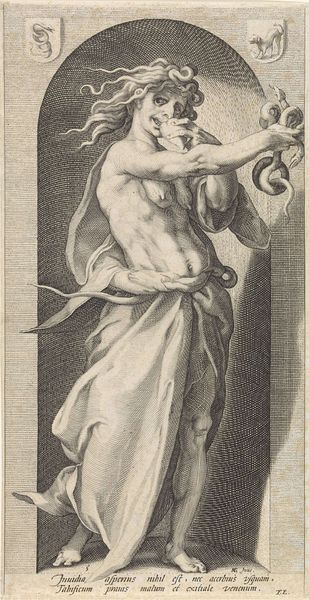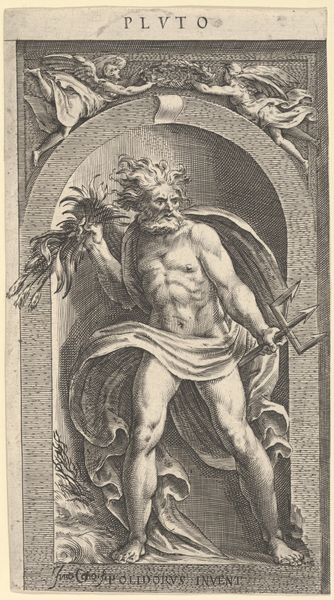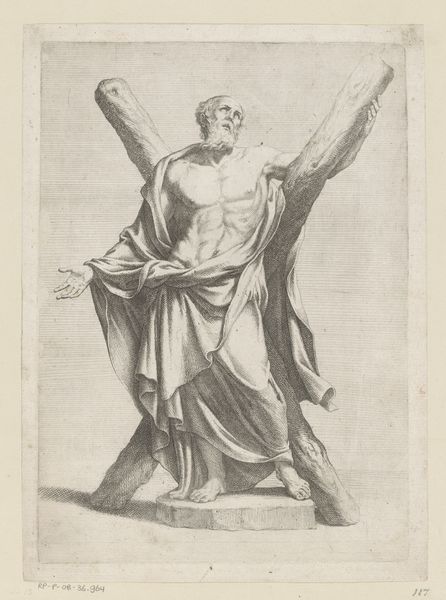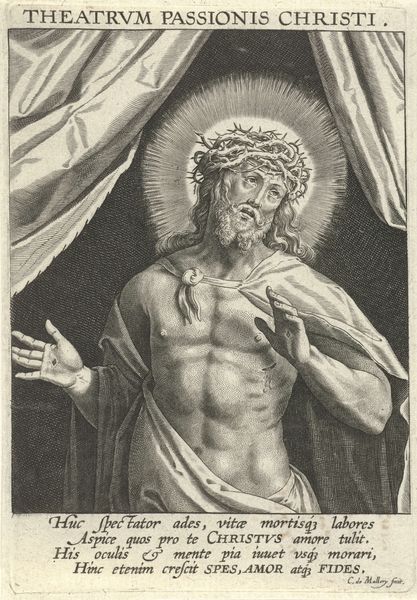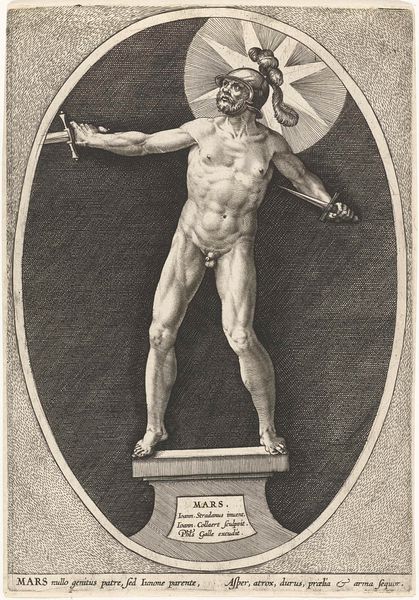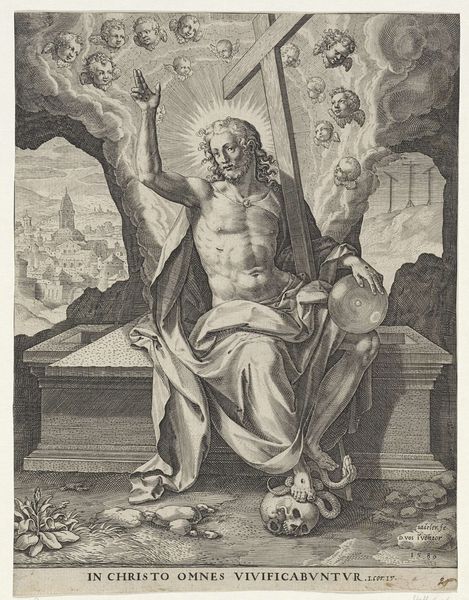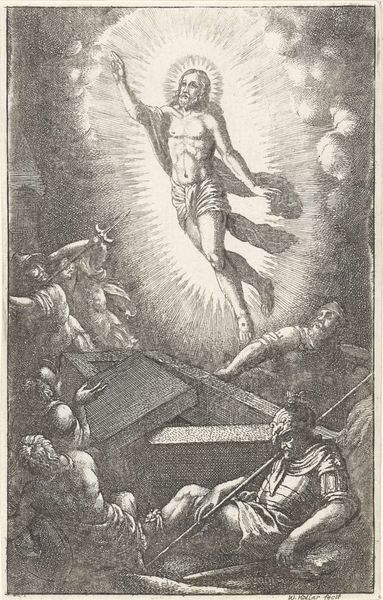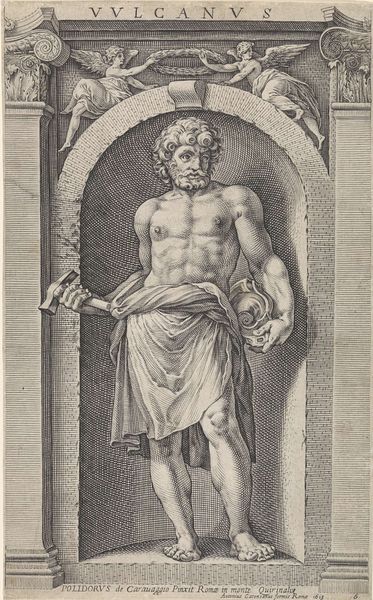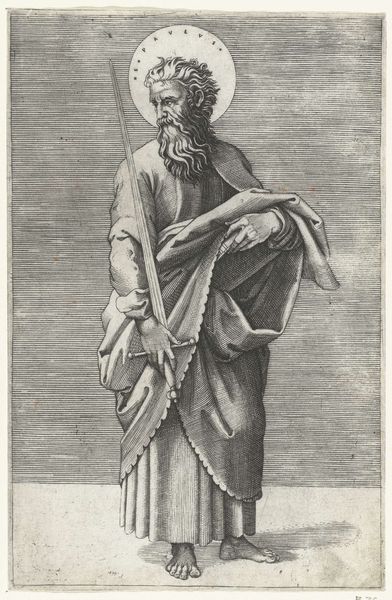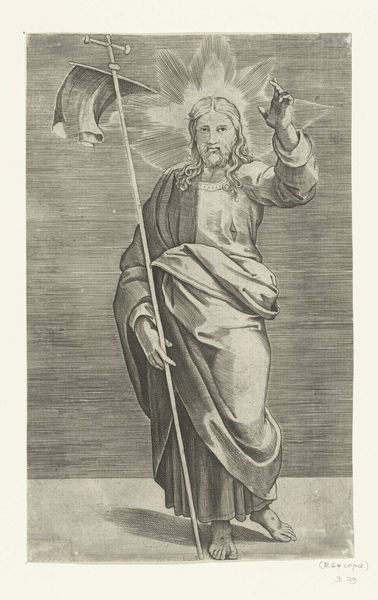
sculpture, engraving
#
baroque
#
figuration
#
sculpture
#
history-painting
#
engraving
Dimensions: height 449 mm, width 300 mm
Copyright: Rijks Museum: Open Domain
Curator: Here we have Petrus Clouwet’s “Statue of Saint Andrew,” an engraving estimated to have been created between 1639 and 1670. Editor: It's remarkable. I'm struck by the figure's intense upward gaze, as if in fervent supplication or even confrontation. Curator: The artist utilizes dramatic chiaroscuro, highlighting the saint’s muscular physique and the heavy drapery, lending a sense of monumentality. The diagonal emphasis is compelling as well. Editor: Absolutely, the diagonal created by the prominent cross which anchors him is hard to ignore! One immediately recognizes this attribute associated with St. Andrew. What I see here goes far beyond an ecclesiastic symbol. This image seems loaded with the political context of its time—the burden of faith during periods of social upheaval and constant war across Europe. Curator: One can discern the classical influences, such as the detailed anatomical rendering in this baroque figure, in the statue-like pose, rooted in traditions dating back to antiquity. Clouwet does achieve dynamism within the constraints of the engraving process through expert modulation and form. Editor: I perceive a raw emotionality beyond pure form. Saint Andrew’s open gesture, coupled with his face contorted with either pain or divine inspiration, transcends conventional religious art. To me, it becomes a visceral commentary on faith's profound impact, echoing societal fractures along religious lines, visible during the historical period when this was made. How interesting, then, that it was produced as an engraving in a book meant to praise a political figure. Curator: By focusing purely on the image's internal mechanics—its line work, contrasting textures—one gains insight into Clouwet’s technical virtuosity. Editor: Perhaps—but considering how artworks like these serve to consolidate or challenge dominant paradigms offers, for me, a vital means for social criticism. Curator: Your sociohistorical approach broadens the appreciation. Editor: As does a formalist's intense focus on the intricacies of line and texture.
Comments
No comments
Be the first to comment and join the conversation on the ultimate creative platform.
